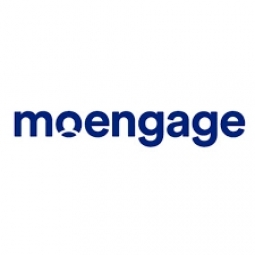技术
- 分析与建模 - 机器学习
- 平台即服务 (PaaS) - 应用开发平台
适用行业
- 消费品
- 零售
适用功能
- 采购
- 销售与市场营销
用例
- 零售店自动化
- 盗窃检测
服务
- 测试与认证
关于客户
Future Retail 经营印度一些最受欢迎的零售连锁店,通过创新的产品、优质的产品和实惠的价格赢得信任,帮助客户每天获得更好的生活质量。每天都有超过 200 万人访问他们的商店和数字网络。 Tathastu 是 Future Group 的子公司,专注于利用人工智能和机器学习创建下一代消费者互动。 Tathastu 的任务是探索和实施创新战略、流程和工具,帮助 Future Group 为数字和移动优先的世界做好准备。
挑战
Future Retail 是印度最受欢迎的零售连锁店之一,其旗舰数字渠道 Future Pay 应用程序面临着重大挑战。该应用程序旨在获取、吸引和重新激活休眠用户,并提高客户的平均每月支出。然而,相当大比例的消费者在手机上安装了 Future Pay 应用程序,但并未使用它。 Future Pay 应用程序用户的平均每月支出还有提高的空间。此外,Future Pay 在通过个性化优惠券和促销活动与客户互动方面具有巨大潜力。 Future Group 子公司 Tathastu 的团队意识到需要提高 Future Pay 的采用率。他们需要了解消费者行为、细分消费者,然后开展个性化活动,通过 Future Pay 应用程序吸引他们。
解决方案
解决方案是实施 MoEngage,这是一种常见的自动化工具,可以帮助 Future Retail 了解跨品牌、业态和渠道的客户行为。通过将 MoEngage 平台插入通用数据湖,多个团队将拥有跨品牌客户的统一视图。这种统一的客户视图将帮助 Future Retail 分析行为属性、对消费者进行微细分,并提供多点触控活动以重新激活 Future Pay 应用程序的休眠用户。例如,“Central”的营销团队可以创建一个在“Big Bazaar”而非“Central”购物的客户群。然后,他们可以分析该消费者群体的具体行为模式,并与“Big Bazaar”的营销团队合作,开展交叉促销和追加销售的特定活动。此外,拥有统一的客户参与平台还意味着可以访问所有品牌团队的标准化分析。 FutureRetail 的营销团队现在查看同一组数据,从而做出更快、更准确的决策。

Case Study missing?
Start adding your own!
Register with your work email and create a new case study profile for your business.
相关案例.
.png)
Case Study
Improving Vending Machine Profitability with the Internet of Things (IoT)
The vending industry is undergoing a sea change, taking advantage of new technologies to go beyond just delivering snacks to creating a new retail location. Intelligent vending machines can be found in many public locations as well as company facilities, selling different types of goods and services, including even computer accessories, gold bars, tickets, and office supplies. With increasing sophistication, they may also provide time- and location-based data pertaining to sales, inventory, and customer preferences. But at the end of the day, vending machine operators know greater profitability is driven by higher sales and lower operating costs.

Case Study
Improving Production Line Efficiency with Ethernet Micro RTU Controller
Moxa was asked to provide a connectivity solution for one of the world's leading cosmetics companies. This multinational corporation, with retail presence in 130 countries, 23 global braches, and over 66,000 employees, sought to improve the efficiency of their production process by migrating from manual monitoring to an automatic productivity monitoring system. The production line was being monitored by ABB Real-TPI, a factory information system that offers data collection and analysis to improve plant efficiency. Due to software limitations, the customer needed an OPC server and a corresponding I/O solution to collect data from additional sensor devices for the Real-TPI system. The goal is to enable the factory information system to more thoroughly collect data from every corner of the production line. This will improve its ability to measure Overall Equipment Effectiveness (OEE) and translate into increased production efficiencies. System Requirements • Instant status updates while still consuming minimal bandwidth to relieve strain on limited factory networks • Interoperable with ABB Real-TPI • Small form factor appropriate for deployment where space is scarce • Remote software management and configuration to simplify operations

Case Study
Digital Retail Security Solutions
Sennco wanted to help its retail customers increase sales and profits by developing an innovative alarm system as opposed to conventional connected alarms that are permanently tethered to display products. These traditional security systems were cumbersome and intrusive to the customer shopping experience. Additionally, they provided no useful data or analytics.

Case Study
How Sirqul’s IoT Platform is Crafting Carrefour’s New In-Store Experiences
Carrefour Taiwan’s goal is to be completely digital by end of 2018. Out-dated manual methods for analysis and assumptions limited Carrefour’s ability to change the customer experience and were void of real-time decision-making capabilities. Rather than relying solely on sales data, assumptions, and disparate systems, Carrefour Taiwan’s CEO led an initiative to find a connected IoT solution that could give the team the ability to make real-time changes and more informed decisions. Prior to implementing, Carrefour struggled to address their conversion rates and did not have the proper insights into the customer decision-making process nor how to make an immediate impact without losing customer confidence.









